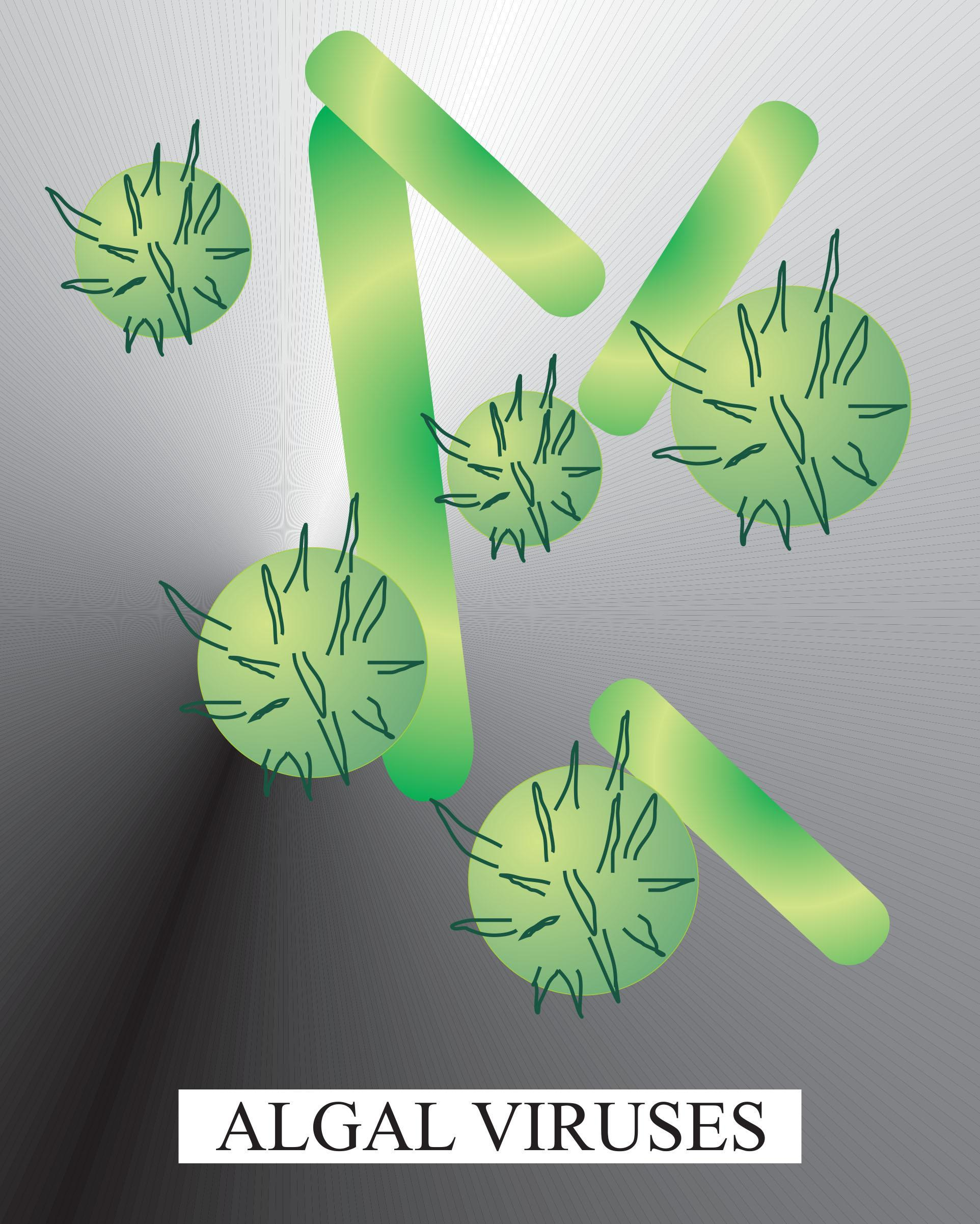
Algal viruses are known as
(a) Binal viruses
(b) Cyanophages
(c) Mycophages
(d) Phycophages
Answer
478.5k+ views
Hint: Virus is an infectious agent that replicates only inside the living cell of an organism. It infects all types of life forms ranging from animals to plants and microorganisms that includes bacteria and archaea. It is a small parasite that cannot reproduce by itself and direct the cell machinery to produce more viruses.
Complete answer:
Algal viruses are known as Phycophages. The study of botany dealing with algae or concerned with the scientific study of algae is known as phycology or algology. They arrange genome types by double-stranded DNA to double-stranded RNA which infects micromonas. Single strand viruses infect heterocapsa and heterosigma.

The virus in which the dinoflagellate and the dye atoms are also positive-sense stranded RNA viruses but they reveal a remarkable difference from the RNA virus. Algal viruses are vital for microbial communities and biogeochemical cycles due to their abundance and diversity in aquatic systems. Conditions that decrease their reproduction rate and make them successful with no or little immediate effects and provided by algal viruses.
Additional information:
Binal viruses: Binal viruses are irregular in shape and have complex structures. They are infectious agents that reproduce at a fantastic rate but in living host cells.
Cyanophages: They are the viruses that attack fungi and infect cyanobacteria. Cyanophages are found in Marine and freshwater. They contain icosahedral heads which are double-stranded DNA connected by tail to the connector proteins. They regulate cyanobacterial populations and infect their wide ranges in aquatic environments. They can cause danger to humans and are reported to contain mature phage particles.
Mycophages: They can transmit the infection to any other healthy fungi. They consist of double-stranded are any elements and are referred to as virus-like particles. They are common in fungi and are frequently infected with two or more unrelated viruses. They use fungi as vectors and are different from mycoviruses as they cannot reproduce in the fungal cytoplasm. They show the cell-to-cell movement. It moves intracellularly during cell division or hyphal fusion.
So, the correct answer is '(d) Phytophagous'.
Note: The term virus means slimy liquid or poison. Viruses contain genetic information which can be DNA or RNA. The biggest virus known is Mimivirus which is about 400 nanometres in diameter and the viral genome is 1,200000 nucleotides in length and codes 900 proteins.
Complete answer:
Algal viruses are known as Phycophages. The study of botany dealing with algae or concerned with the scientific study of algae is known as phycology or algology. They arrange genome types by double-stranded DNA to double-stranded RNA which infects micromonas. Single strand viruses infect heterocapsa and heterosigma.

The virus in which the dinoflagellate and the dye atoms are also positive-sense stranded RNA viruses but they reveal a remarkable difference from the RNA virus. Algal viruses are vital for microbial communities and biogeochemical cycles due to their abundance and diversity in aquatic systems. Conditions that decrease their reproduction rate and make them successful with no or little immediate effects and provided by algal viruses.
Additional information:
Binal viruses: Binal viruses are irregular in shape and have complex structures. They are infectious agents that reproduce at a fantastic rate but in living host cells.
Cyanophages: They are the viruses that attack fungi and infect cyanobacteria. Cyanophages are found in Marine and freshwater. They contain icosahedral heads which are double-stranded DNA connected by tail to the connector proteins. They regulate cyanobacterial populations and infect their wide ranges in aquatic environments. They can cause danger to humans and are reported to contain mature phage particles.
Mycophages: They can transmit the infection to any other healthy fungi. They consist of double-stranded are any elements and are referred to as virus-like particles. They are common in fungi and are frequently infected with two or more unrelated viruses. They use fungi as vectors and are different from mycoviruses as they cannot reproduce in the fungal cytoplasm. They show the cell-to-cell movement. It moves intracellularly during cell division or hyphal fusion.
So, the correct answer is '(d) Phytophagous'.
Note: The term virus means slimy liquid or poison. Viruses contain genetic information which can be DNA or RNA. The biggest virus known is Mimivirus which is about 400 nanometres in diameter and the viral genome is 1,200000 nucleotides in length and codes 900 proteins.
Latest Vedantu courses for you
Grade 8 | CBSE | SCHOOL | English
Vedantu 8 CBSE Pro Course - (2025-26)
School Full course for CBSE students
₹45,300 per year
Recently Updated Pages
Master Class 9 General Knowledge: Engaging Questions & Answers for Success

Master Class 9 English: Engaging Questions & Answers for Success

Master Class 9 Science: Engaging Questions & Answers for Success

Master Class 9 Social Science: Engaging Questions & Answers for Success

Master Class 9 Maths: Engaging Questions & Answers for Success

Class 9 Question and Answer - Your Ultimate Solutions Guide

Trending doubts
Give 10 examples of unisexual and bisexual flowers

Draw a labelled sketch of the human eye class 12 physics CBSE

Differentiate between homogeneous and heterogeneous class 12 chemistry CBSE

Differentiate between insitu conservation and exsitu class 12 biology CBSE

What are the major means of transport Explain each class 12 social science CBSE

Why is the cell called the structural and functional class 12 biology CBSE




